- 8 Tips for Shooting Video in Natural Light
-

Master the art of natural light when creating video. Learn everything from how to set up your camera for shooting in the great outdoors to dealing with harsh lighting conditions.
Shutter Speed
When setting up your camera to shoot video, the first thing you need to do is make sure your shutter speed is set at double your frame rate. For example, if you are filming at 50 fps (frames per second), your shutter speed should be 1/100. A frame rate of 24 fps with a shutter speed of 1/48 or 1/50 will give your footage a smooth cinematic look and feel. Higher frame rates, such as 60 fps with a shutter speed of 1/120, will allow you to slow down your footage at the editing stage and create ultra-smooth slow motion scenes.
Aperture
Your aperture setting controls how much of your frame is in focus. A low aperture such as f/2.8 will help you emphasise your subject and create a professional-looking blurry background. If you want to make sure as much of your scene is in focus as possible, use a high aperture like f/10 or f/22.
ISO
Once you have your shutter speed and aperture dialled in you can select an ISO setting to suit. Remember that the higher your ISO number is, the more grain you will introduce to your footage.
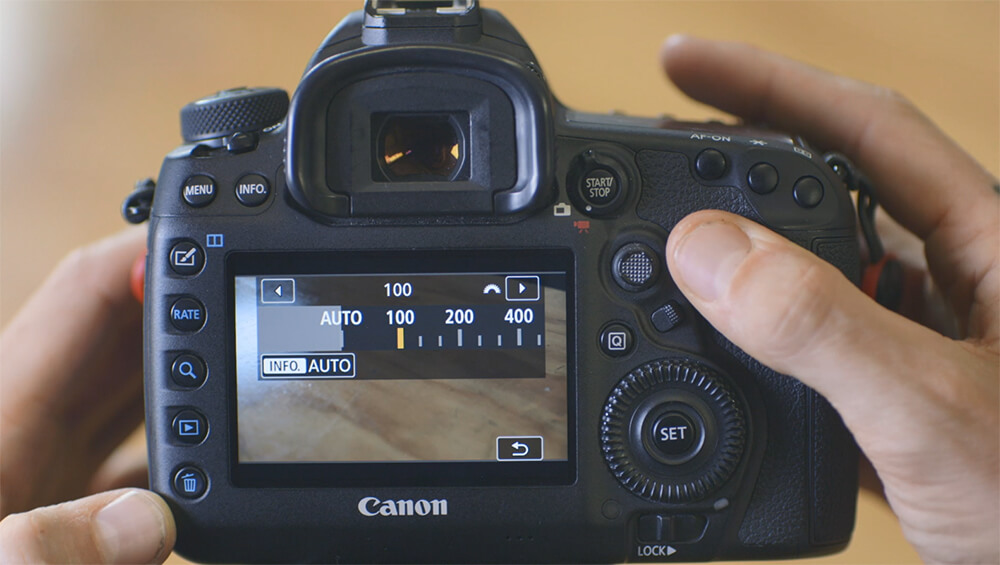
Because it’s so important to lock off your shutter speed at double your frame rate, and use a low aperture number to create a shallow depth-of-field, it’s likely that your video will be overexposed in bright sunlight, even if you are using your camera’s lowest ISO. To solve this, simply add an ND (neutral density) filter to your lens to limit the amount of light that enters your camera. This will allow you to use slow shutter speeds and wide apertures to film perfectly exposed footage.
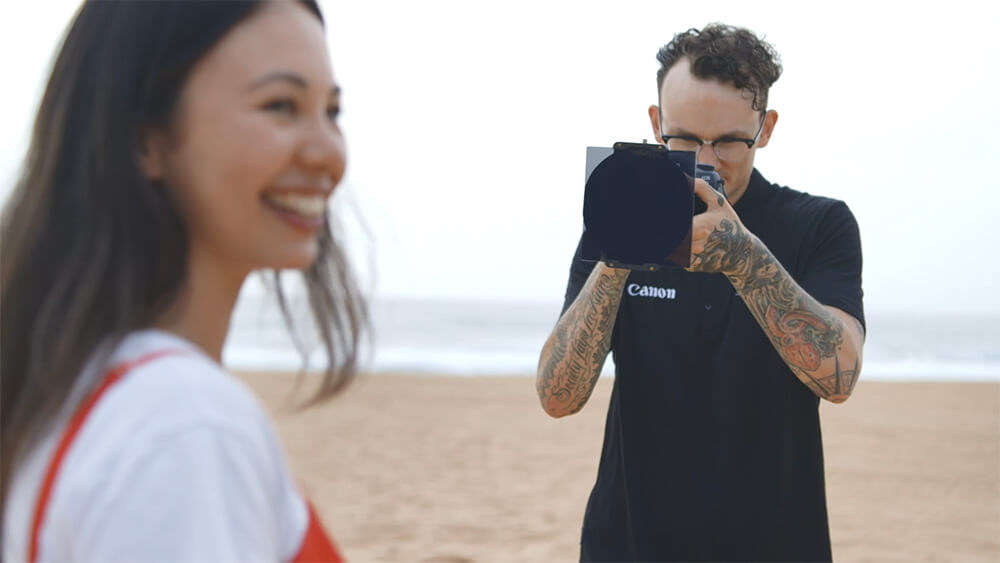
When shooting subjects in the great outdoors, it’s important to consider your light sources when planning and framing your shots. For example, if you’re shooting at the beach, it’s recommended not to shoot with strong sunlight beaming directly into your subject’s face. This can result in glary looking footage with overly bright subjects who are forced to squint into the camera. Instead, seek out indirect lighting to create a more balanced look. You can do this by filming your subject with the light directly behind them or from the side. You can also shoot in the shade and use light reflectors to bounce light back on to your subject.
Using a tripod or gimbal can help you shoot perfectly smooth and steady video footage without any camera shake whatsoever. If your camera lens has image stabilisation then you can also shoot handheld footage to create a more dynamic look and feel. Handheld shots aren’t generally as smooth as tripod or gimbal shots, but they can add a sense of movement and emotion to your footage. If you plan to edit your footage, it’s also worth remembering that you can smooth out any shaky handheld footage in post-production.
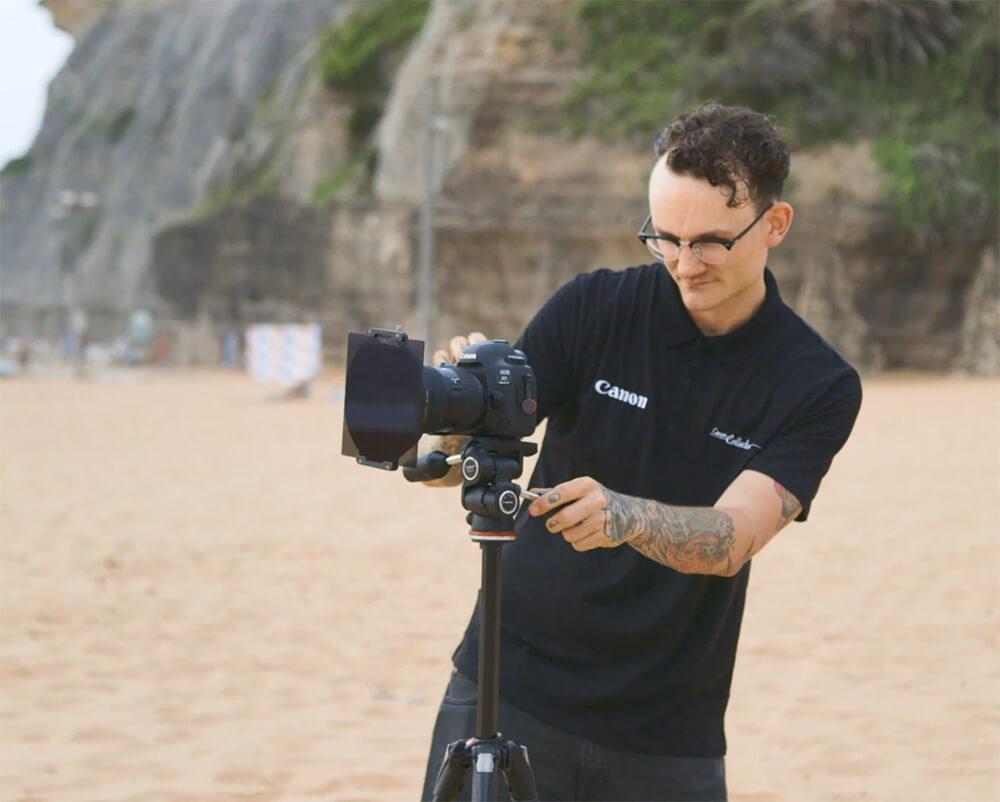
By selecting an AF (autofocus) method, your camera will automatically track your subject and keep it in focus. There are a number of different AF methods to choose from: the Face+Tracking mode identifies and maintains focus on moving subjects. The FlexiZone - Multi mode has a wide focus area that makes it suitable for focussing on multiple subjects, while the FlexiZone - Single can be used for focussing on a particular subject.
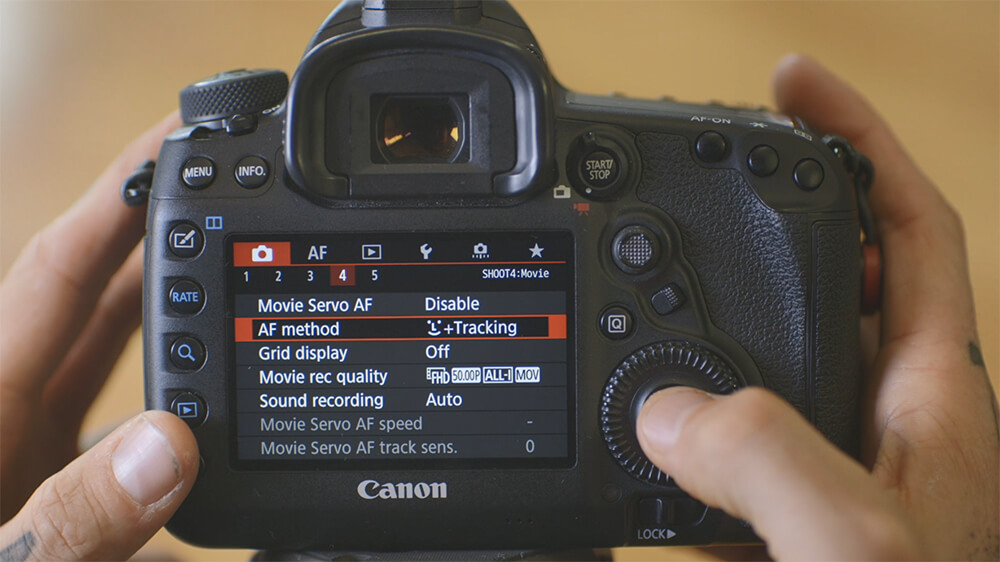
If you are shooting video while using your camera’s internal microphone, it’s recommended that you disable your Movie Servo AF. This will ensure that your camera’s internal microphone doesn’t pick up the sound of your lens hunting for focus. If you are using an external mic, however, whether on your hot shoe mount or off-camera altogether, you will enable your camera’s Movie Servo AF function.
Unlike still images, it is not so easy to edit the look and feel of video footage in post-production. For this reason, it’s important to get as close as possible to the look you want in-camera while shooting. To assist with this, Canon cameras feature a range of fully-customisable Picture Styles which are designed to get the most out of different shooting scenarios, whether it be landscapes or portraits. There is also a Monochrome Picture Style for shooting high quality black and white video footage, as well as a Neutral style for creating a flat C-Log style video profile that can be easily edited later.
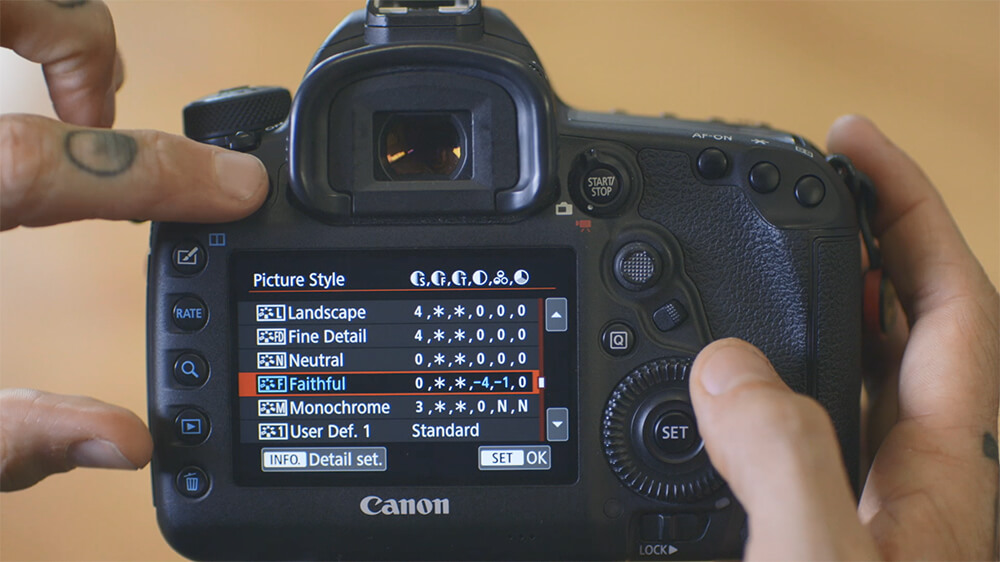
The best way to improve your natural light video shooting skills is to put them into practice in a real-world setting. No matter what your current skill level is, you can be sure to find the perfect Canon workshop near you.
Learn more about videography with this tutorial series.

Learn how to shoot video in 4K with this step-by-step guide.

Learn how to create pro-looking timelapse sequences with this simple video tutorial.

In this insightful video guide, we give advice on the best camera settings for shooting quality video.